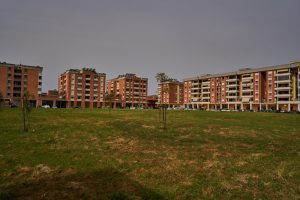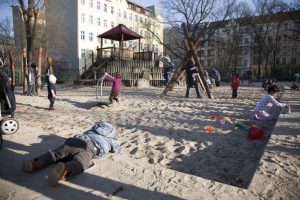
Located in the south-eastern part of the city of Latina, Piazza Ilaria Alpi is one of the place identified by the UPPER UIA project in Latina as a demonstration site for the planting of new plant species to counteract the increase in temperature, linked to the heat island effect. Tesserae was responsible for the co-design activitiies of the project.

Once an unattractive place, formerly on the East-West border and at the periphery of public discourse, it has recently become an area of new interest for different social groups. Over the years it has welcomed a mainly Turkish community, but now young people from all over Europe are attracted to Neukölln by its affordable rents, and new bars, art galleries and trendy shops are appearing. However, rents are increasing dramatically, and Neukölln is showing signs of gentrification, which raises debates about the future of the district and its low-income inhabitants.